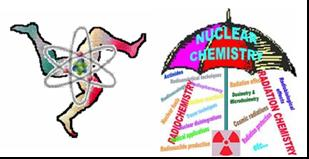Speakers
Dr
Olga Feynberg
(NRC "Kurchatov Institute")Prof.
Victor Ignatiev
(NRC "Kurchatov Institute")
Description
Last decade, systems with liquid fuel on the base of molten salts attracted attention as potential dedicated burners of transuranium (TRU) elements from LWR spent fuel. Kurchatov Institute with partners contributed to Molten Salt Reactor (MSR) development within ISTC#1606 and #3749 tasks. Within these projects key technical solutions for development of promising TRU transmuter concepts were obtained. Studies included the following work packages: (1) fuel cycle, neutronics and thermal hydraulics analyses, including benchmarks on computing of safety parameters and transient analysis; (2) experimental verification of key physical & chemical properties for selected fuel salt compositions and (3) combined materials compatibility & salt chemistry control in selected molten salt environments at parameters simulating design operation.
Within ISTC#1606 project the main attention was focused on theoretical and experimental evaluation of single stream MOlten Salt Actinide Recycler & Transmuter (MOSART) system. The optimum spectrum for Li,Be/F MOSART is intermediate/fast spectrum of homogeneous core without graphite moderator. Due to possibility of operation without additional neutron sources MOSART loaded only by TRU from spent nuclear fuel has high transmutation efficiency and can be loaded by the fuel with wide range of compositions.
Unification of MOSART system with Th containing molten salt blanket, (the option is under study now within ISTC#3749), can provide its core operation with minor actinide (MA) bearing fuels basing on additional 233U support. In this case, when the core is processed, unburned actinides are returned to core along with 233U available from blanket. On the base of existing technologies within technological margins it is possible to burn any composition of used LWR fuel up to Pu/(Np+MA)=1.5 ratio.
There is a way to get self-sustainable mode in the single-fluid LiF-BeF2-ThF4 core when it starts with carrier salt of lithium and beryllium fluorides fuelled by TRUF3 without any blanket. This fuel cycle scenario will require after system start up step by step increase of the thorium tetrafluoride in the fuel salt up to 6 mole %. The consideration done demonstrates the potential of the Li,Be,Th MSR without graphite moderator as the system with flexible configurations and fuel cycle scenarios which can operate with different loadings and make up based on TRU from used LWR fuel as special actinide burner, as self-sustainable system (CR=1) or even as a breeder (CR>1). In second part this paper is focused on chemical peculiarities of fuel recycle and fission product clean up for MOSART system without and with Th-U support.
Author
Prof.
Victor Ignatiev
(NRC "Kurchatov Institute")
Co-author
Dr
Olga Feynberg
(NRC "Kurchatov Institute")
